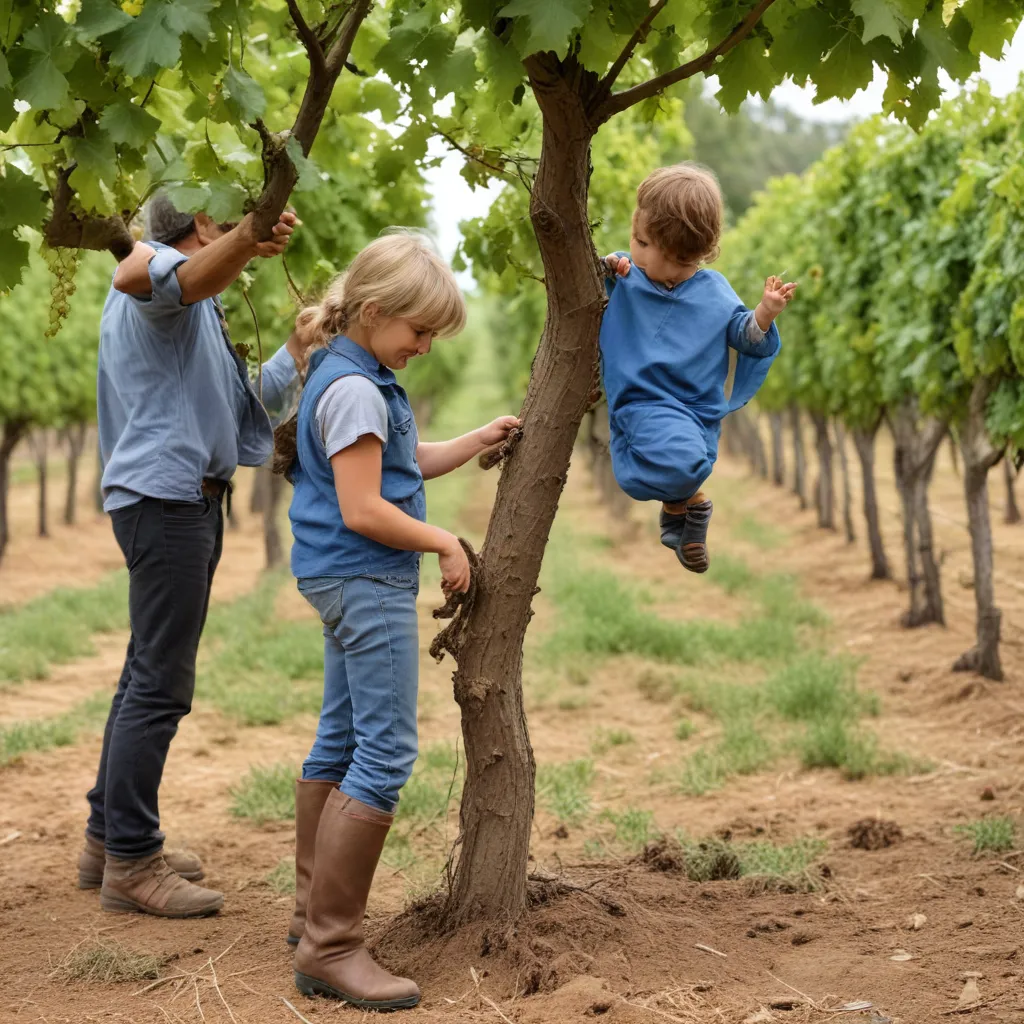
Viticulture, the cultivation of grapevines, is an intricate dance between the soil, the climate, and the unwavering commitment of the vintner. In the pursuit of crafting wines that truly capture the essence of their terroir, a growing number of winemakers have embraced the principles of biodynamic winemaking – an approach that goes beyond organic practices to nurture the delicate balance of the vineyard’s ecosystem.
Holistic Approach to Viticulture
At the heart of biodynamic winemaking lies a holistic philosophy that views the vineyard as a self-sustaining, interconnected organism. Rather than treating the land as a resource to be exploited, biodynamic vintners strive to create a balanced and diverse ecosystem where every element – from the soil to the celestial bodies – plays a crucial role in the overall health and vitality of the vines.
Soil Health and Fertility
Biodynamic viticulture places a strong emphasis on maintaining and enhancing the fertility of the soil. Vintners employ a variety of techniques, including the use of biodynamic preparations – specialized composts made from herbs, minerals, and animal manures – to stimulate the soil’s microbial life and promote the natural cycle of nutrients. The incorporation of cover crops, the integration of livestock, and the avoidance of synthetic fertilizers all contribute to the development of a rich, living soil that can sustain the vines without the need for external inputs.
Lunar and Stellar Rhythms
Another distinctive aspect of biodynamic winemaking is the attention paid to the rhythms of the moon and the cosmos. Vintners often follow an astrological calendar to guide their vineyard activities, believing that the position of the moon and planets can influence the growth and development of the vines. Tasks such as pruning, planting, and harvesting are timed to coincide with the celestial cycles, with the goal of aligning the vineyard’s natural processes with the larger rhythms of the universe.
Biodynamic Farming Practices
Implementing biodynamic principles in the vineyard requires a comprehensive approach that encompasses a wide range of farming practices. Vintners work to create a self-sustaining ecosystem, relying on techniques such as composting, crop rotation, and the integration of livestock to enhance the overall health and resilience of the land.
Biodynamic Preparations
At the heart of biodynamic farming are the specialized biodynamic preparations, which are applied to the soil and the vines to stimulate their natural vitality. These preparations, made from ingredients like cow manure, quartz, and various medicinal herbs, are believed to enhance the soil’s acidity, improve the vines’ ability to absorb nutrients, and even influence the quality and character of the grapes.
Composting and Manure Management
Biodynamic vintners place a strong emphasis on the careful management of organic materials, such as compost and animal manure, to nourish the soil and promote the growth of beneficial microorganisms. By creating nutrient-rich compost on-site, they are able to minimize the need for external inputs and ensure that the vineyard’s ecosystem is self-sustaining.
Crop Rotation and Biodiversity
In addition to the use of biodynamic preparations, biodynamic viticulture often involves the incorporation of diverse crops, cover crops, and native plant species to enhance the overall biodiversity of the vineyard. This approach not only helps to maintain soil health but also supports the presence of beneficial insects and other wildlife, creating a balanced and resilient ecosystem.
Ecosystem-Centric Vineyard Management
Biodynamic winemaking goes beyond the mere application of farming techniques; it is a way of thinking that places the vineyard’s ecosystem at the center of the vintner’s decision-making. This holistic approach manifests in various aspects of vineyard management, from the conservation of biodiversity to the efficient use of natural resources.
Biodiversity Conservation
Biodynamic vintners are committed to maintaining and enhancing the biodiversity within their vineyards. By encouraging the presence of a wide range of plant and animal species, they create a balanced ecosystem that can naturally regulate pests, promote pollination, and support the overall health of the vines.
Pest and Disease Control
Instead of relying on synthetic pesticides, biodynamic viticulture employs integrated pest management strategies that leverage the power of natural predators and beneficial organisms. This approach not only reduces the environmental impact but also strengthens the vineyard’s resilience against pests and diseases.
Water Conservation
Water is a precious resource, and biodynamic vintners are mindful of its efficient use. By implementing techniques such as cover cropping, mulching, and thoughtful irrigation practices, they strive to conserve water and ensure the long-term sustainability of their vineyards.
Winemaking Techniques
Biodynamic winemaking extends beyond the vineyard, with vintners adopting a minimal-intervention approach in the winery to preserve the natural qualities of the grapes and the distinct character of the terroir.
Fermentation and Aging
Many biodynamic winemakers rely on indigenous yeasts for fermentation, allowing the native microflora to guide the transformation of the grapes into wine. Similarly, the aging process often involves the use of traditional vessels, such as wooden barrels or concrete tanks, to maintain the wine’s purity and authenticity.
Sulfite-Free Winemaking
Some biodynamic vintners go a step further by producing wines with minimal or no added sulfites, a common preservative in conventional winemaking. This approach requires meticulous attention to detail and can result in wines that are more sensitive to environmental conditions but offer a unique and unadulterated expression of the grape’s natural qualities.
Minimal Intervention
Adhering to the biodynamic philosophy, biodynamic winemakers strive to intervene as little as possible during the winemaking process, allowing the grapes to express their inherent characteristics without excessive manipulation or the addition of unnecessary additives.
As we delve into the captivating world of biodynamic winemaking, it becomes clear that it is not merely a set of farming practices, but a holistic worldview that seeks to nurture the delicate balance of the vineyard’s ecosystem. By embracing this approach, vintners are not only crafting wines of exceptional quality and authenticity but also contributing to the long-term sustainability of their land and the environment. As consumers, we have the opportunity to support this movement and savor the fruits of a truly harmonious relationship between the vintner, the land, and the cosmos.
